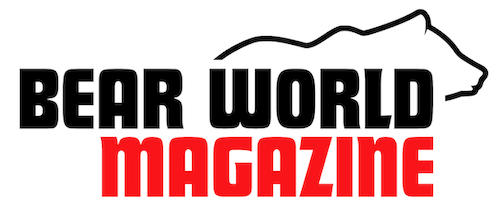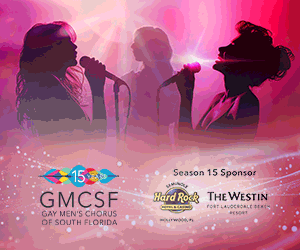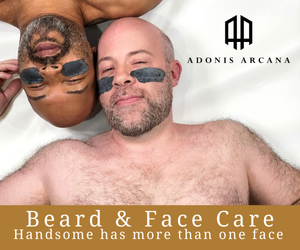Bear Tracks: Bears and Class
When Eric Rofes submitted his essay “Academics as Bears: Thoughts on Middle-Class Eroticization of Workingmen’s Bodies” to The Bear Book (1997), I was gob-smacked. I had grown up in a poor working-class family. And I was an academic. I had identified as a bear from the start and thought of bears in terms of community, a community of outsiders in the gay community. I had never thought about bears in terms of social class. In his essay Rofes dives into the meat of economic class, socioeconomic status, and the subtler shadings of cultural capital.
A quick review: Capitalism is an economic system that converts labor (work) into capital (money). This practice began in in the late Middle Ages in Europe. In the Middle Ages most people were peasants bound to the land owned by their landlords. Two important consequences followed. Peasants gained the freedom to move and earn money elsewhere (physical mobility). They also gained the ability to earn money more than what they needed (accumulate excess capital), allowing them to rise in social class (social mobility). The more you increase your wealth (money and property) the higher you rise in social class. In The Protestant Ethic and the Spirit of Capitalism Max Weber argued that this shift resulted in work no longer being seen as good for your soul (having a religious meaning), but as a purely mechanical practice–the means to a material end (making money). Weber’s theory has been debunked, but it set up the connection of capitalism with democracy. To this day many Americans believe that capitalism, an economic system, is the same as democracy, a system of government. This is a false equivalency (comparing apples to oranges).

Socioeconomic status is determined not only by income and related social privilege, but it is also derived from education and occupation. In 1977 Pierre Bourdieu introduced the concept of “cultural capital,” identifying further components involved in how social class and social mobility actually work. More recently, the concept of intersectionality has been added, which articulates additional factors in social class—race, sexual orientation, gender conformity, and others. In short, wealth alone does not determine class. Access to education, job opportunities, where you can afford to live and other forms of structural discrimination are as well. In most Western societies white privilege, for example, is a hugely determining factor.
Most of the bears I became personal friends with in the 1980s had relartively low-paying jobs—waiter, bartender, janitor, retail sales clerk, filing clerk, house painter, bank teller. I also knew several bears in the high-tech field–computer programmers, software engineers, and the like. I gave little thought to the money high-tech bears were making, only that their work sounded lethally boring. Like Rofes, I was an academic. Whereas Rofes had grown up in a solidly middle-class Long Island family, I had grown up in a working-class family in upstate New York. Like most Americans, I assumed my family was middle-class. The year I was a high school exchange student in West Germany (an option white privilege afforded me) I was hosted by a politically prominent upper-middle-class family. Living with them made clear to me that I was not just working-class, but poor working-class.
An important result of social mobility, as John Berger pointed out in Ways of Seeing, was the birth of social envy. Once people became able to prosper and rise in social class, their neighbors often looked on with “the grass is always greener” envy. Displays of wealth fed that envy. For a long time the myth of the American Dream ameliorated that envy. In our allegedly egalitarian meritocracy, anyone can pull themselves up by their bootstraps through playing by the rules and hard work. With the ever growing, and now staggering, wealth gap between the “haves” and the “have-nots” in America’s present Second Gilded Age, as more and more Americans have been falling into the new social class of “the working poor,” as the truly poor are ending up homeless in increasing numbers, as the uberwealthy show off their vast wealth and power, social envy has been turning into anger. All this has brought us to the present frighteningly dangerous state of political affairs, something best left discussed elsewhere.
Add to this social envy the “dream world” of advertising, broadcast through mass media,
and we arrive in contemporary consumer-capitalist society. Much advertising aims to seduce us into buying luxury items, stuff we don’t need. Acquiring these status symbols magically improve our lives, or so say the ads. How much power do fashion and travel advertisements in gay publications, images of young and muscled and horse-hung men on the internet, Facebook posts showing off the conspicuous consumption afforded by our “gay dollars” have influence over our desires and sense of self-worth? To what degree does our bear identity stem from real-life experience and how much from news and advertising in the mass media? Advertising is, clearly, both a help and a hindrance. “If you see it, you can be it” philosophy, currently in vogue in American mass media to socially advance African Americans in particular, played a pivotal role in spreading the idea of gay bears and bear community.

To date, only two writers have addressed the issue of class among bears—Eric Rofes in 1997 (as cited above), and Rusty Barrell in his 2017 study “The Class Menagerie: Working-Class Appropriations and Bear Identity.” (Barrell notes that there were 1.4 million self-identifying bears in the US in 2008.) In terms of cultural capital, all three of us are academics. Rofes was a professor of education, Barrett is a professor of linguistics, and I was a professor of literature. While my teaching salary, only one-third of the average salary for humanities faculty at the time, placed me solidly in the working-class, my advanced education gave me a wealth of cultural capital. One study of working-class academics describes us as “strangers in paradise.” My dear friend and fellow humanities professor Tanya Gardner-Scott, used to say, sarcastically, “We got the education to appreciate the finer things in life, but not the money to enjoy them.”
Rofes and Barrell both view bear masculinity through their own middle-class lens. Both of them understand bears as a middle-class gay white male fetish for white working-class masculinity—muscles, if any, from physical labor (not the gym), a hefty body (from working-class eating habits), often a hairy body and/or a full beard (a sign of raw, “primitive” working-class masculinity), and wearing the “bear drag” of working-class men—lumberjack, cowboy, construction worker, mechanic, or (according to Barrell) white trash Southern hillbilly. (I remember descriptions of “bubba bears” at Southern Decadence in the 1980s.) It would be interesting to know what Rofes (who died in 2006) would make of the widespread fashion of full beards in the US today.
Both authors see this as eroticizing class difference, something academics describe as “symbolic violence.” Rofes sees middle-class “bear drag” as a continuation of doctors, lawyers, architects, and other professionals playing “dress up” and “slumming” in the leather subculture. Rofes describes this as a middle-class fetishizing of working-class bears as desiring “bodies, marked as they are by poverty and economic oppression,” the allure being “at once unsettling and fascinating.” In English author E. M. Forster’s posthumously published novel Maurice the upper-middle-class Maurice Hill falls in love with Alec Scudder, a gamekeeper. This relationship creates class consciousness in
Maurice, causing him to reject his bourgeois (upper-middle-class) values. Perhaps Rofes is suggesting that middle-class bears’ flirtations with working-class bears is dangerous and might lead to a similar rejection of their own class values?
Rofes speculates on whether middle-class bears performing bear drag as working-class bears are actually reclaiming long lost or forgotten vestiges of themselves, channeling
their economic privilege into sexual desire, or merely eroticizing their social inferiors as enticingly dangerous. He speculates on whether this practice of devaluating working-class bears alienates working-class bears.

Such speculation reflects middle-class fantasy projections, which leave out other qualities bears are noted for being—affectionate, nurturing, warm-hearted, cuddly, welcoming, and continuing efforts to include all comers to the bear community. Despite the blending of masculine pursuits, such as watching sports or camping in the woods, with feminine activities, like knitting, crocheting, cooking, and sewing, Barrell asserts that “bear identity is founded in class as much as (if not more than) in gender.”
People’s subjective perception of their social class is often significantly different from their actual social class. A 2017 Gallup poll revealed that most Americans consider themselves “middle-class.” Lower and working-class Americans have traditionally considered themselves solidly middle-class. Well-off Americans have traditionally identified themselves as upper-middle-class, even when they are upper-class. From the start bears have not all been middle-class, gay, white, cisgender men. As the umbrella of ever-growing diversity continues to expand to include self-identifying bears—trans, lesbian, BIPOC, and more—it remains important that we be aware of class differences. Our collective experience as a stigmatized minority within the gay community in the 1980s gave birth to this democratic spirit. The conceit that we are all vaguely middle-class is a shield that minimizes the realities of our class differences. Our “outsider” social class did not arise out of economic difference. Our inclusiveness—our solidarity—can be a lifesaver for the poor and many of the elderly bears among us.
To my knowledge, very few investigations have been made into the bear communities outside American culture. Social class and socioeconomic status vary dramatically from society to society. I am currently not in a position to make meaningful observations. I hope others well-positioned to do so, will take up the mantle.
Help Les K Wright in his quest to document bear history by joining the Bear History Project International where you and a group of like-minded individuals can exchange ideas and help to preserve bear history and culture.
















